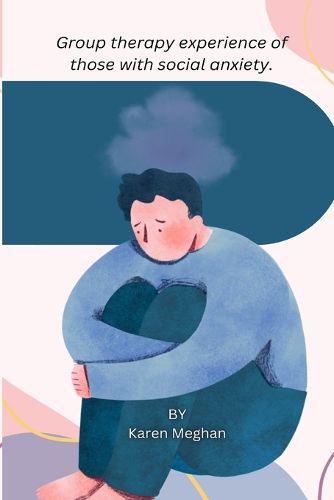Readings Newsletter
Become a Readings Member to make your shopping experience even easier.
Sign in or sign up for free!
You’re not far away from qualifying for FREE standard shipping within Australia
You’ve qualified for FREE standard shipping within Australia
The cart is loading…






Social Anxiety Disorder (SAD) is one of the most common psychiatric
disorders (Kessler et. al., 2005), and is associated with substantial impairment and
suffering (Aderka et. al., 2012). This Book focused on the treatment of SAD in a
group setting, as group interventions are widely utilised within the context of
community mental health (McEvoy, 2012). Whilst group CBT treatments for SAD
have demonstrated efficacy, a substantial proportion of people do not improve
(Rodebaugh, Holaway & Heimberg, 2004) highlighting the need to continue efforts
to enhance the protocols. The current research was directed at better understanding
how people experiencing SAD change after a successful group therapy experience.
It also aimed to understand the nature and impact of interpersonal and group process
variables within the therapy groups. The data gathered in these two domains were
utilised to identify areas in which existing group CBT treatment protocols could be
enhanced.
A qualitative research paradigm was utilised in this research to explore the
experience of participants taking part in group therapy treatments for SAD.
Fourteen people who met DSM-IV TR criteria for SAD took part in a 9 week group
therapy treatment, and then participated in a semi-structured interview. Interpretive
Phenomenological Analysis of the interview transcripts found that
phenomenological change in social anxiety occurred in five key areas. Three of
these areas (changed views of self, others, and social encounters) are incorporated
within existing theoretical frameworks and treatment protocols. The other two areas
(a changed relationship to the anxiety, and a changed way of experiencing/being with others) were novel findings in relation to existing frameworks. These new
areas of change provide new targets for therapeutic interventions in the treatment of
SAD.
$9.00 standard shipping within Australia
FREE standard shipping within Australia for orders over $100.00
Express & International shipping calculated at checkout
Social Anxiety Disorder (SAD) is one of the most common psychiatric
disorders (Kessler et. al., 2005), and is associated with substantial impairment and
suffering (Aderka et. al., 2012). This Book focused on the treatment of SAD in a
group setting, as group interventions are widely utilised within the context of
community mental health (McEvoy, 2012). Whilst group CBT treatments for SAD
have demonstrated efficacy, a substantial proportion of people do not improve
(Rodebaugh, Holaway & Heimberg, 2004) highlighting the need to continue efforts
to enhance the protocols. The current research was directed at better understanding
how people experiencing SAD change after a successful group therapy experience.
It also aimed to understand the nature and impact of interpersonal and group process
variables within the therapy groups. The data gathered in these two domains were
utilised to identify areas in which existing group CBT treatment protocols could be
enhanced.
A qualitative research paradigm was utilised in this research to explore the
experience of participants taking part in group therapy treatments for SAD.
Fourteen people who met DSM-IV TR criteria for SAD took part in a 9 week group
therapy treatment, and then participated in a semi-structured interview. Interpretive
Phenomenological Analysis of the interview transcripts found that
phenomenological change in social anxiety occurred in five key areas. Three of
these areas (changed views of self, others, and social encounters) are incorporated
within existing theoretical frameworks and treatment protocols. The other two areas
(a changed relationship to the anxiety, and a changed way of experiencing/being with others) were novel findings in relation to existing frameworks. These new
areas of change provide new targets for therapeutic interventions in the treatment of
SAD.